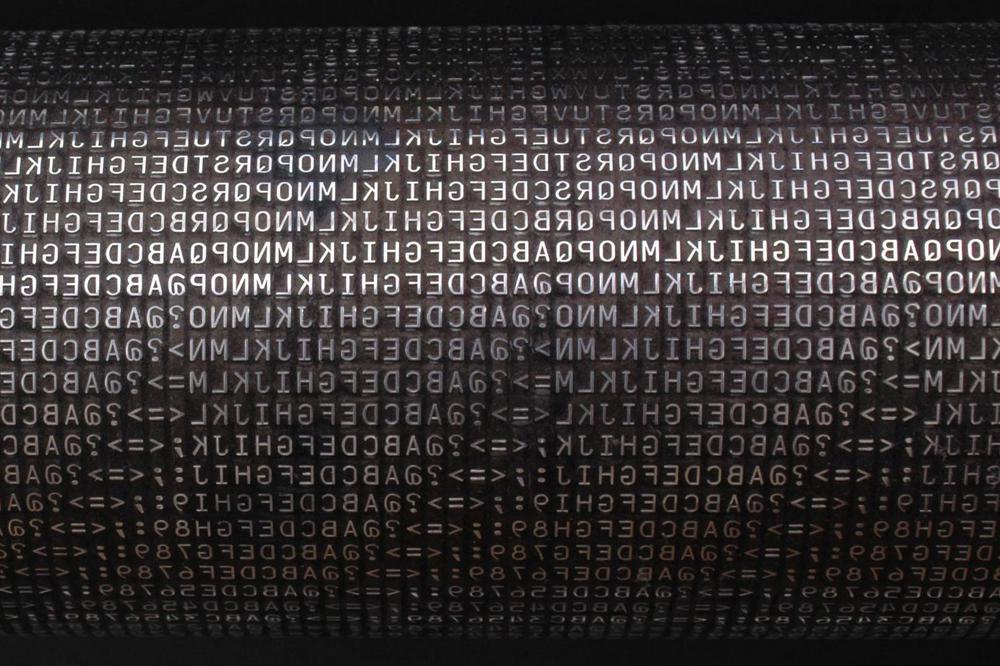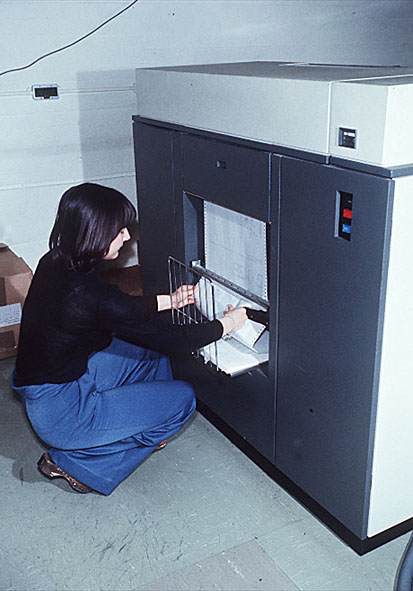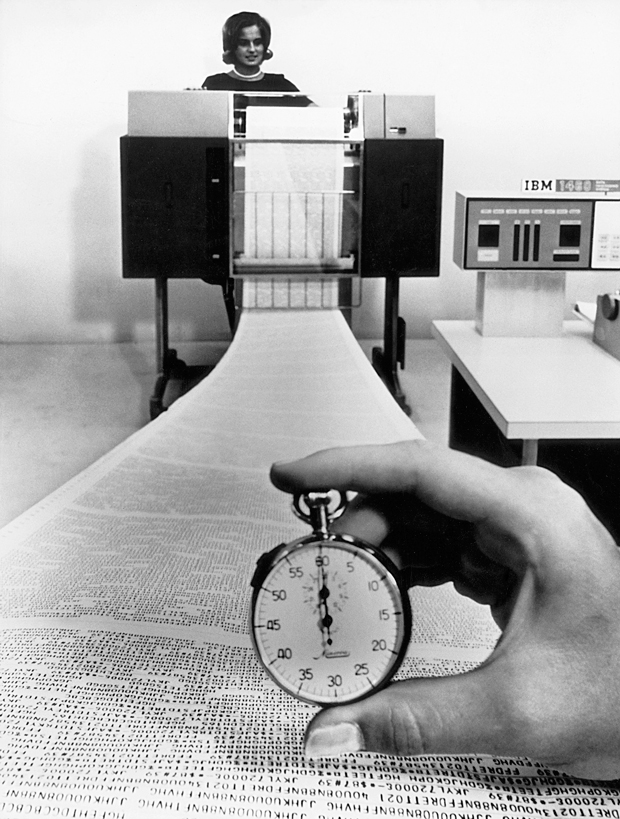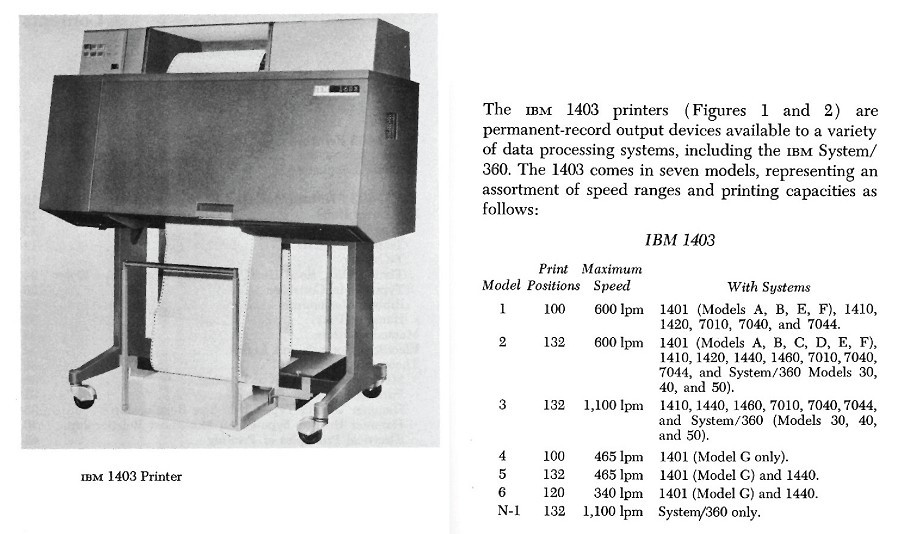How did the IBM 1403 printer print 1,100 lines per minute in 1963? The secret in electromagnetic hammers

The one-of-a-kind IBM 1403 Model 3 printer (IBM 1403 Model C) was released in 1963 with the IBM 1460 computer system, an upgrade of the legendary IBM 1401 — it was one of the first transistor computers in the world to go on sale. This revolutionary system made the transition from punched cards and patch panels to magnetic tapes.
Introduced in October 1959, the IBM 1401 computer turned out to be several times cheaper than previous-generation tube computers - it could be installed at a company for as little as $ 6,500 a month ($ 54,000 for modern money), and it was an order of magnitude more compact, not already occupied the room. During the month, IBM received 3,000 orders for the IBM 1401 - more orders than at that time there were computers in the world.
In 1963, a more advanced version of the IBM 1460 came out with twice the performance - just 6 microseconds per cycle. And with it, the IBM 1403 Model 3 printer-record holder, incredibly fast even by modern standards. He produced 1100 lines of text per minute , absorbing a roll of paper at a crazy speed. Just manage to change rolls.
')

Female programmer rolls roll to IBM 1403 printer
How did he do it? This tells the magazine IEEE Spectrum .

Most of the "lettered" principle of printing IBM 1403 resemble matrix printing. As in it, the ink is applied by contacting the paper with the print heads through the ink ribbon. But otherwise there are important differences.
First, five identical sets of 48 embossed metal symbols were installed in the printer, as if in a typewriter, all connected into a horizontal chain that rotated at a speed of 5.2 meters per second in front of the incoming roll of paper and ink ribbon.
Secondly, the printing of symbols was not carried out by pressing the symbol on the ribbon with paper, as in a typewriter, but on the contrary, by pressing the paper to the right place of a furiously rotating chain with metal symbols - with the help of small electromagnetic hammers.
This technology has been extremely fruitful. Over the years, eight IBM 1403 models came out. Some had 132 hammers, one for each printed column. Each such element was driven by an electromagnet. As soon as the desired symbol in the metal chain appeared behind the ribbon in the right place, the hammer worked for 11 microseconds.

When the 132 hammers pounded simultaneously at breakneck speed, it created unbearable noise. The noise was so strong that it led some engineers to write music for the printer .
Different sequences of characters are beaten off by hammers with different tonality, and these sounds merge into a drone at different frequencies, a kind of "notes." Composer Johann Johansson (Jóhann Jóhannsson) says that the program for generating this music on a printer was written by his father, who worked with the first versions of IBM 1401.
In IBM 1403 Model 3, the original metal chain with symbols was replaced with individual elements in the tracks, which were driven by separate gears. Due to this, the print speed was increased to a record level of 55 milliseconds per line, which corresponds to 1,100 lines per minute. And if you restrict printing to a certain subset of characters, then the speed increased to 1400 lines. This number of lines (1100 per minute) approximately corresponds to 47 typewritten pages (according to the standard, the typewritten page contains 29-31 lines). That is, the ancient office printer of 1963 printed 47 pages of text per minute.
For comparison, today the world record for color printing speed on an office printer belongs to the models Hewlett-Packard Officejet Pro X551dw and Officejet Pro X576dw All-in-One. They print 500 color pages in 7 minutes 19 seconds.
The fastest modern inkjet printer with 5198 nozzles produces 100 pages per minute .
All these wonders of modern technology are comparable in speed with electromagnetic hammers from IBM sample 1963. Although laser printing allowed printing at the same rate as early as the 1970s, IBM continued to sell IBM 1403 series printers until the 1980s. And even now, the company believes that they are the " quality standard for high-speed contact printing ."
Source: https://habr.com/ru/post/403041/
All Articles